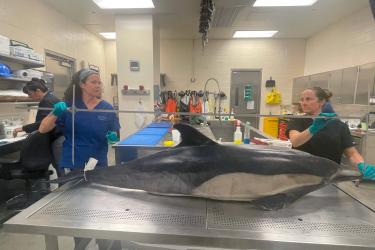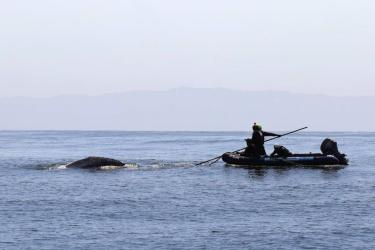Researchers from Simon Fraser University and NOAA’s Northwest Fisheries Science Center found retreating glaciers in Alaska and British Columbia could open up new stream habitats for Pacific salmon. The findings were published today in the scientific journal Nature Communications.
The researchers modeled glacier retreat under different climate change scenarios, essentially “peeling back the ice” from 46,000 glaciers between southern British Columbia and southcentral Alaska. They looked at how much favorable salmon habitat would be created when the underlying bedrock is exposed, and new streams flow over the landscape.
New and favorable streams, in this case, means relatively flat streams connected to the ocean that have retreating glaciers at their headwaters. The researchers identified 315 glaciers that fit that bill.
Under a moderate climate scenario, researchers predicted those glaciers to reveal around 6,150 kilometers of potential new salmon habitat throughout the Pacific mountains of western North America by 2100. That’s a distance nearly equal to the length of the Mississippi River.
“We predict that most of the emerging salmon habitat will occur in Alaska and the transboundary region, at the British Columbia‒Alaska border, where large coastal glaciers still exist,” says the study’s lead author, Dr. Kara Pitman of Simon Fraser University. The researchers predict that the Gulf of Alaska sub-region will see the most gains—a 27 percent increase in salmon-accessible habitat by 2100.
And once conditions stabilize in the newly formed streams, salmon can colonize these areas relatively quickly.
“It’s a common misconception that all salmon return home to the streams they were born in,” Dr. Pitman says. “Most do, but some individuals will stray—migrate into new streams to spawn and, if conditions are right, the population can increase rapidly.” For example, at Stonefly Creek in Glacier Bay, Alaska, glacier retreat in the 1970s revealed a salmon spawning habitat. Pink salmon population colonized the stream over 15 years, and the population has grown to more than 5,000 spawners.
Climate Change Poses Many Challenges for Salmon
The newly created habitat may be a ray of light for salmon in some locations. However, the researchers caution that, overall, climate change is still posing a grave challenge for salmon.
Drs. George Pess and Tim Beechie of NOAA’s Northwest Fisheries Science Center are co-authors of the paper. Beechie points out that many Pacific salmon habitats in the Pacific Northwest and California are becoming less favorable due to climate change. Increasing summer stream temperatures and decreasing summer low flows are two main issues.
For instance, the Northwest Fisheries Science Center conducted recent life-cycle modeling of coastal Chinook, steelhead, and coho populations in the Chehalis River basin in Washington. It projected that their freshwater survival would be significantly reduced by climate change without habitat restoration. Chinook salmon in the Sacramento River face a similar fate. Threatened Snake River spring/summer Chinook salmon will also experience starkly lower survival rates during their years in the ocean in the future compared to now.
“On one hand, this amount of new salmon habitat will provide local opportunities for some salmon populations,” says Dr. Pitman. “On the other hand, climate change and other human impacts continue to threaten salmon survival—via warming rivers, changes in stream flows, and poor ocean conditions.”
Climate change means we increasingly need to look to the future, she says. “We can’t just protect current-day habitat for species but need to consider what habitats they might rely on in the future.”



